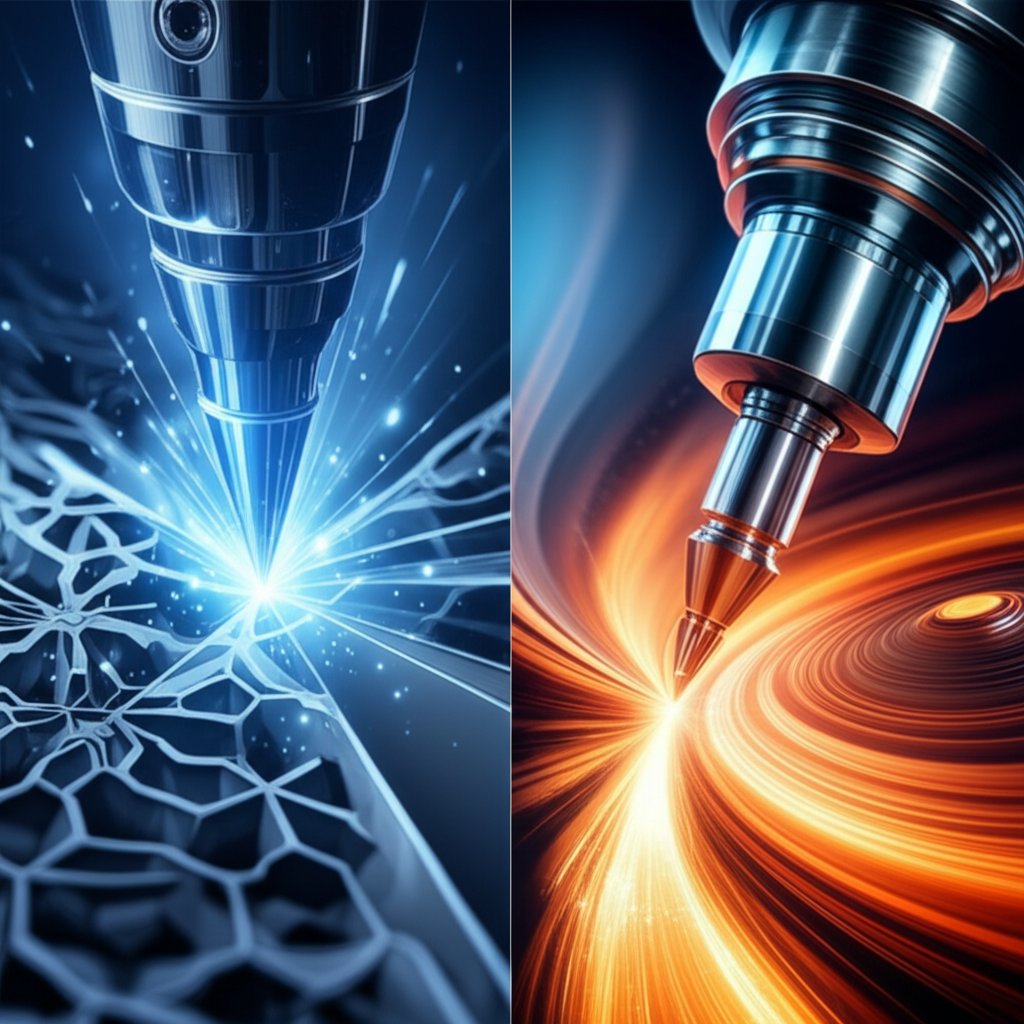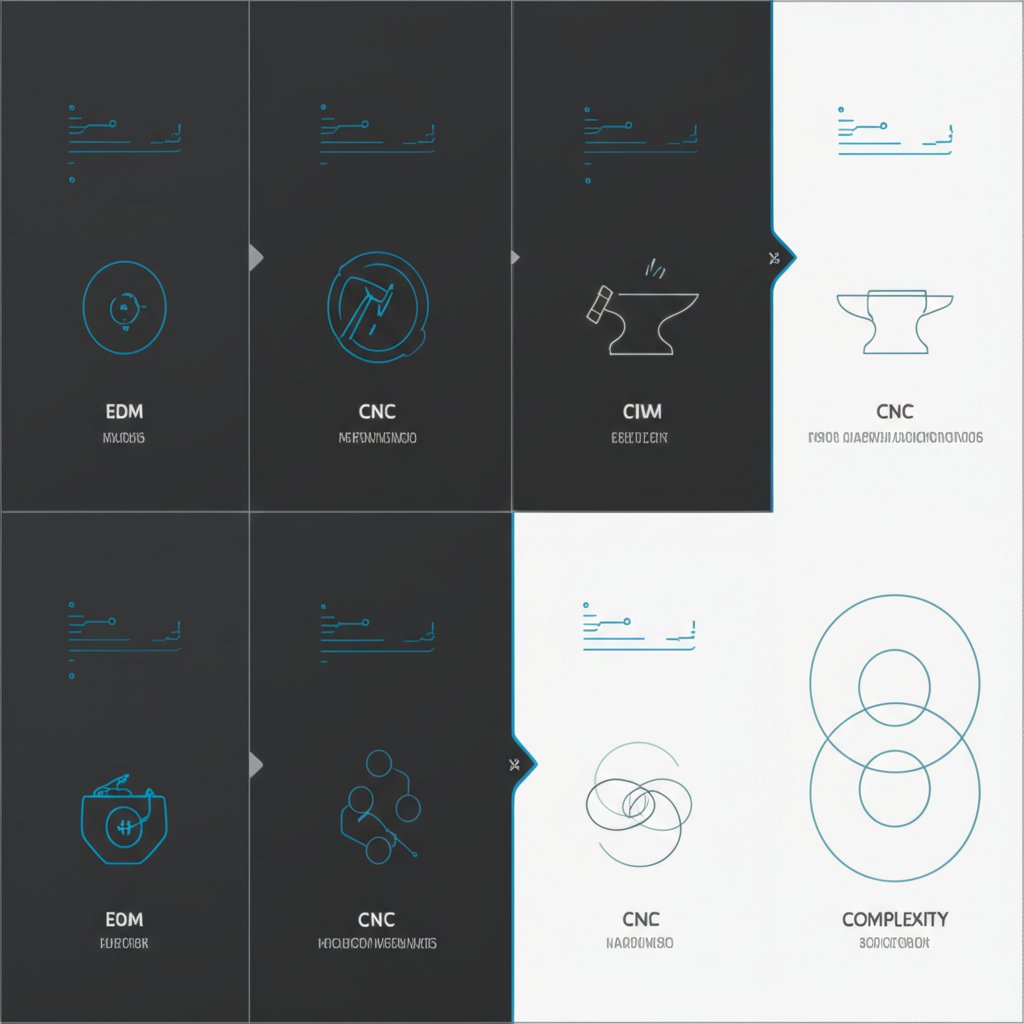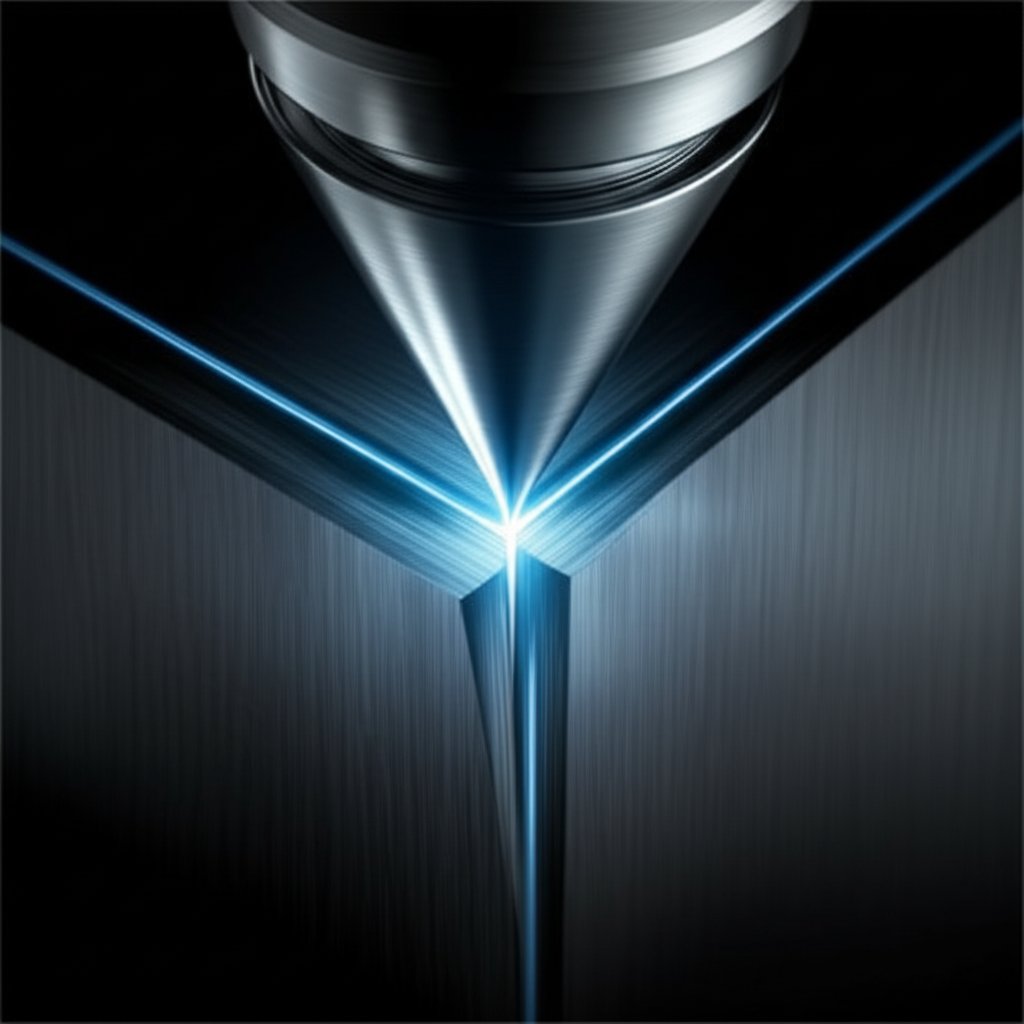EDM vs Traditional CNC Machining: Which Process Is Right?

TL;DR
Choosing between Electrical Discharge Machining (EDM) and traditional CNC machining depends on your project's specific needs for precision, material, and complexity. The core difference is that traditional CNC uses physical contact with a cutting tool to remove material, while EDM is a non-contact process that uses electrical sparks to erode conductive materials. This allows EDM to achieve exceptional precision on very hard metals and complex shapes, whereas CNC offers greater speed and versatility for a wider range of materials and simpler parts.
Fundamental Principles: Contact vs. Non-Contact Machining
To select the right manufacturing process, it's essential to understand the fundamental mechanics of both traditional CNC machining and EDM. Though both are subtractive methods, they remove material in fundamentally different ways, which dictates their respective strengths and applications.
Traditional CNC (Computer Numerical Control) machining operates through direct physical contact. A sharp, rotating cutting tool, such as an end mill or a drill bit, is programmed to move along a workpiece, physically shearing away material to create the desired shape. This method is incredibly versatile, capable of working with a vast array of materials including metals, plastics, and wood. The process is defined by mechanical force, relying on the hardness and sharpness of the cutting tool to overcome the resistance of the workpiece material.
Electrical Discharge Machining (EDM), on the other hand, is a non-contact, thermal energy process. It works by creating a series of rapid, controlled electrical discharges (sparks) between an electrode (a wire or a shaped die) and a conductive workpiece. Both components are submerged in a dielectric fluid, which acts as an insulator until the voltage is high enough to create a spark. This spark generates intense heat (8,000 to 12,000°C), melting and vaporizing a tiny amount of the workpiece material. The flowing dielectric fluid then flushes away the eroded particles. Because there is no physical contact, mechanical stress and tool wear are virtually eliminated. However, this process is limited to electrically conductive materials like steel, titanium, and copper alloys.
Head-to-Head Comparison: Key Performance Metrics
When evaluating EDM vs. traditional CNC machining, several key performance indicators determine which process is better suited for a given application. The choice often comes down to a trade-off between precision, speed, material compatibility, and cost. The non-contact nature of EDM gives it a significant advantage in accuracy and handling hard materials, while CNC's direct-contact approach often leads in speed and versatility.
Understanding these differences is crucial for engineers and designers. For example, the lack of cutting forces in EDM prevents part distortion, making it ideal for delicate or thin-walled components. Conversely, the high material removal rates of CNC machining make it a more economical choice for high-volume production of less complex parts. The following table provides a direct comparison of their capabilities.
| Criterion | EDM (Electrical Discharge Machining) | Traditional CNC Machining |
|---|---|---|
| Precision & Tolerance | Extremely high precision. Can achieve tolerances as tight as +/- 0.0002 inches. Ideal for aerospace and medical parts. | Good precision, but generally lower than EDM. Tolerances are typically around +/- 0.001 inches. Tool deflection can limit accuracy. |
| Material Hardness | Excellent for very hard materials like hardened tool steel, tungsten carbide, titanium, and Inconel. Hardness does not affect the process. | Limited by tool hardness. Machining very hard materials causes significant tool wear, reducing speed and accuracy. |
| Geometric Complexity | Superior for complex shapes, especially sharp internal corners (as small as 0.005" radius), deep cavities, and thin walls. | Limited by tool geometry. Cannot create sharp internal corners (leaves a radius). Deep cuts can cause tool chatter and vibration. |
| Surface Finish | Can produce a superior, burr-free surface finish, sometimes mirror-like, without secondary processing. No directional tool marks. | Good surface finish, but often shows tool marks or swirl patterns. May require secondary polishing or grinding for a smoother finish. |
| Speed & Cost | Generally a slower process due to lower material removal rates. Can be more expensive for simple parts but cost-effective for complex ones. | Faster material removal rates make it more cost-effective for simpler parts and high-volume production. |
| Material Compatibility | Limited to electrically conductive materials only. | Highly versatile. Can machine metals, plastics, wood, composites, and other non-conductive materials. |
When to Choose EDM: Scenarios for Unmatched Performance
While traditional CNC machining is a versatile workhorse, certain scenarios demand the unique capabilities of Electrical Discharge Machining. EDM excels where conventional methods struggle or fail, particularly when dealing with extreme hardness, intricate geometries, and the need for absolute precision without inducing mechanical stress. Opting for EDM in these situations is not just preferable; it is often the only viable solution.
Consider these specific applications where EDM is the superior choice:
- Machining Extremely Hard Materials: One of the primary advantages of EDM is its ability to machine materials regardless of their hardness. It can effortlessly cut hardened tool steel, tungsten carbide, titanium, and superalloys like Inconel. Since EDM uses thermal energy rather than physical force, there is no tool wear from cutting hard materials, a common issue that plagues traditional CNC methods.
- Creating Sharp Internal Corners and Complex Shapes: Traditional milling cutters are round, which means they inherently leave a radius in any internal corner. Wire EDM, however, uses a very thin wire (as small as 0.004 inches in diameter) that can create virtually dead-sharp internal corners. This makes it indispensable for applications like mold making, where precise corners are critical to prevent material leakage.
- Parts with Extremely Tight Tolerances: When a project demands the highest level of precision, EDM is the answer. Because the process is non-contact, it eliminates tool pressure, deflection, and vibration, allowing it to achieve tolerances as tight as ±0.0002 inches. This level of accuracy is essential for components in the medical, aerospace, and die-making industries.
- Delicate and Thin-Walled Components: The lack of mechanical force makes EDM ideal for machining delicate parts with thin walls that would otherwise be distorted or damaged by the pressure of a conventional cutting tool. The process removes material without inducing any stress into the workpiece, ensuring the part's structural integrity is maintained.
- Deep Cuts with High Aspect Ratios: Milling deep, narrow slots with a traditional end mill is challenging due to the high length-to-diameter ratio, which can cause tool chatter and breakage. EDM, particularly wire EDM, is not susceptible to these issues and can easily create deep, precise features with high aspect ratios.

When Traditional CNC Reigns: The Case for Speed and Versatility
Despite the remarkable precision of EDM, traditional CNC machining remains the dominant process in manufacturing for good reasons: speed, versatility, and cost-effectiveness in a wide range of applications. For many projects, the extreme tolerances of EDM are unnecessary, and the advantages of CNC machining provide a more practical and economical solution. Understanding its strengths helps clarify when it is the undisputed better choice.
Here are the key scenarios where traditional CNC machining is the optimal process:
- Working with Non-Conductive Materials: The most significant limitation of EDM is its requirement that the workpiece be electrically conductive. Traditional CNC machining has no such constraint. It is the go-to method for a vast array of materials, including plastics, wood, composites, and foams, making it far more versatile for general-purpose manufacturing.
- High-Volume Production and Speed: CNC machining boasts significantly higher material removal rates than EDM. When speed is a primary driver and part geometries are relatively simple, CNC can produce parts much faster and more economically. This efficiency makes it the standard for high-volume production runs where cost-per-part is a critical factor.
- Cost-Sensitive Projects with Standard Tolerances: For parts that do not require the ultra-tight tolerances offered by EDM, traditional CNC is almost always the more cost-effective option. The machinery, tooling, and setup times are often less expensive, making it a better financial choice for a wide range of commercial and industrial components.
- Rapid Prototyping: For projects focused on rapid prototyping and iterative design, traditional CNC is often the go-to. Its speed allows for quick turnaround of physical models for fit and function testing. Services that specialize in this area can accelerate development. For instance, you can explore XTJ's comprehensive formative manufacturing services, which offer rapid turnaround and DFM feedback for prototypes.

Making the Right Choice for Your Project
The decision between EDM and traditional CNC machining is not about which is universally better, but which is optimal for a specific task. A thorough analysis of your project's requirements—material, complexity, tolerance, volume, and budget—will guide you to the most efficient and effective process. EDM is the specialist, delivering unparalleled precision for hard materials and intricate shapes. Traditional CNC is the versatile all-rounder, offering speed and cost-efficiency across a broad spectrum of applications. In many advanced manufacturing scenarios, the best outcome is achieved by combining both methods, using CNC for roughing and EDM for the final, precise details.
Frequently Asked Questions
1. What is the difference between EDM and traditional machining?
The primary difference lies in the material removal method. Traditional machining uses physical contact, where a sharp cutting tool mechanically shears material from a workpiece. EDM is a non-contact process that uses controlled electrical sparks to erode conductive material. This distinction leads to EDM's ability to machine hard materials and complex shapes with higher precision and no mechanical stress.
2. What are the disadvantages of EDM machining?
EDM has several key limitations. Its biggest disadvantage is that it can only be used on electrically conductive materials, making it unsuitable for plastics, composites, or ceramics. The process is also generally slower than conventional machining due to lower material removal rates, which can increase costs for simpler, high-volume parts. Finally, the process creates a small heat-affected zone on the workpiece surface.
3. How is EDM better than conventional methods?
EDM excels in areas where conventional methods struggle. It is superior for machining extremely hard materials without causing tool wear. It can achieve much tighter tolerances (as low as +/- 0.0002") and create complex geometries like sharp internal corners that are impossible with rotating tools. Furthermore, because it is a non-contact process, it does not induce mechanical stress, preventing distortion in delicate or thin-walled parts and producing a burr-free finish.
-
Posted in
cnc machining, EDM, Electrical Discharge Machining, precision machining, subtractive manufacturing





